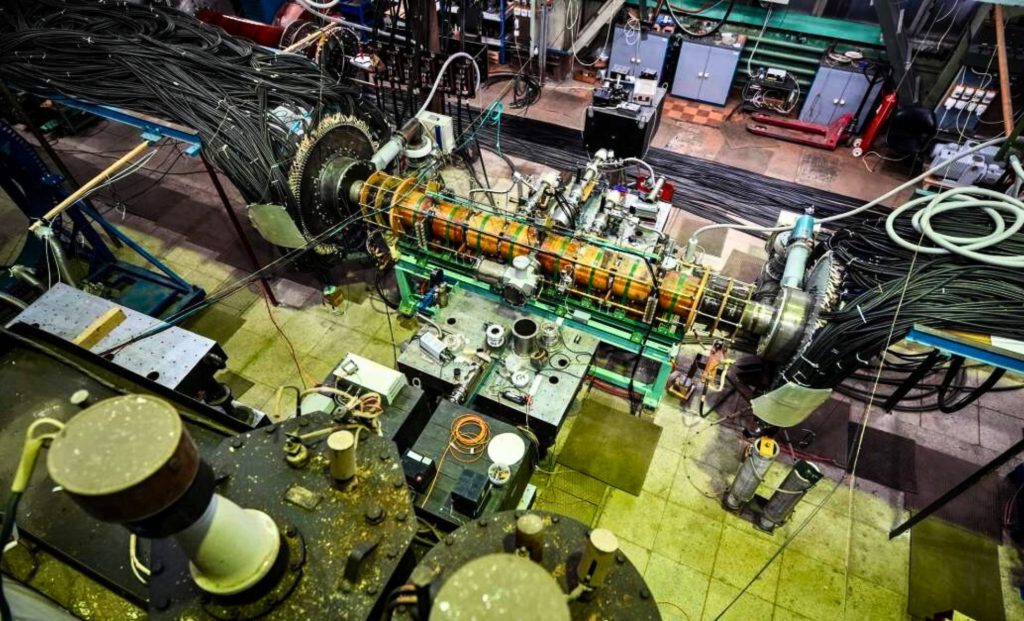Russian Scientists Develop a Plasma Engine Capable of Reaching Mars in 30 Days—Spacex’s Starship Could Become Obsolete – The Daily Galaxy –Great Discoveries Channel

A new plasma engine could slash Mars travel time to just 30 days, a leap far beyond current technology. Russian scientists claim to have built a working prototype, pushing space travel into uncharted territory. The mechanics behind it remain largely untested, and skepticism lingers. If the numbers hold up, this could redefine interplanetary exploration.Russian scientists have unveiled an ambitious new plasma engine that could drastically cut the travel time to Mars, reducing the journey from several months to just one or two. If successful, this breakthrough could redefine interplanetary exploration and bring humanity closer to deep-space travel. But is this cutting-edge technology ready for real-world missions, or is it just another sci-fi dream?Developed by Rosatom’s Troitsk Institute, this revolutionary magnetoplasma propulsion system functions differently from traditional chemical rockets. Instead of burning fuel to generate thrust, it uses electromagnetic fields to accelerate charged particles—primarily hydrogen ions—to extreme speeds of 100 km/s (360,000 km/h). By comparison, conventional rockets can only achieve 4.5 km/s due to the limitations of combustion.Unlike chemical propulsion, which delivers an initial burst of speed but then coasts, plasma engines provide continuous thrust, allowing spacecraft to accelerate steadily over time. This sustained acceleration could allow a spacecraft to reach Mars in 30 to 60 days, significantly reducing astronauts’ exposure to cosmic radiation and psychological strain during the voyage.This isn’t just a theoretical concept—scientists at Rosatom have already built a working prototype of the plasma engine, which is currently undergoing ground tests. The experimental setup includes a 4-meter-wide and 14-meter-long vacuum chamber designed to replicate space conditions. The engine operates in a pulse-periodic mode, with a power output of 300 kW, and has demonstrated a lifespan of 2,400 hours, long enough for a Mars-bound journey.Once operational, the plasma engine will not replace traditional chemical rockets but will instead take over once a spacecraft reaches orbit. The system could also be used as a space tug, transporting cargo between planetary orbits much faster than current technology allows.One of the key innovations behind this engine is its use of hydrogen as the primary propellant. Hydrogen’s advantages include:While plasma propulsion isn’t a new concept, the speeds claimed by Rosatom—100 km/s—are far beyond the capabilities of existing ion thrusters, which typically max out at 30-50 km/s. If these claims hold up, Russia could be decades ahead of competitors in advanced propulsion systems.Currently, NASA’s Psyche mission and several OneWeb satellites already use Russian-made plasma thrusters, demonstrating the country’s expertise in this field. However, this new system aims to take plasma propulsion to an entirely new level.The roadmap for this technology is ambitious. According to the project’s scientific advisor, a flight-ready model of the engine is expected to be completed by 2030. While this timeline might seem optimistic, Russia’s track record in space propulsion gives the project credibility.If successful, this innovation could open the door for faster missions to Mars, deep-space exploration, and even the possibility of reaching the outer solar system within a human lifetime.While the idea of reaching Mars in one to two months sounds incredible, several challenges remain:Despite these uncertainties, if this technology delivers on its promises, it could mark a new era in space exploration. Whether it becomes a reality or remains a futuristic concept, the idea of a 30-day journey to Mars is closer than ever before.The article was originally published in En.iz.ru. Got a reaction? Share your thoughts in the commentsEnjoyed this article? Subscribe to our free newsletter for engaging stories, exclusive content, and the latest news.RubbishOh, so because it goes against Elon, all of a sudden Russia is good, right?You people are sick in the head.What’s the difference between this and VASMIR. …”variable specific impulse magnetoplasmic rocket”? It a accelerates hydrogen as a plasma using microwaves magnetic confinement and a resonance accelerator. This article doesn’t describe how the device functions at all. This sounds the same except for acceleration of xenon or argon, it accelerates hydrogen. This the high speed of the exhaust.Sooo speed-up game is strong but… how is the slow down game? Cuz yaknow… getting there as fast as possible is sweet and all but being able to stop when you arrive is another.Forgive me, but: Yawn!Entrepreneurs in the US have had a similar plasma rocket called VASIMR under development for about 25 years.There is a huge problem with these plasma engines. They work on electrical power. To get high thrust at high specific impulse (“efficiency”) requires megawatts of power. There is no way to get around this. The requirement is a rigid as F=mA or E=mc^2. But any megawatt-class power source, such as a big solar panel or a nuclear reactor, would be so heavy that any advantage is lost.Lol so let’s all a sudden trust russias ingenuity and innovation over known working models. They barely probed Venus and it took how many attempts? LmaoSounds good in theory. Let’s see if it works out.
US doing nything in this field – if so where are they?Comment Save my name, email, and website in this browser for the next time I comment.
© 2024 | Daily Galaxy | All rights reserved



